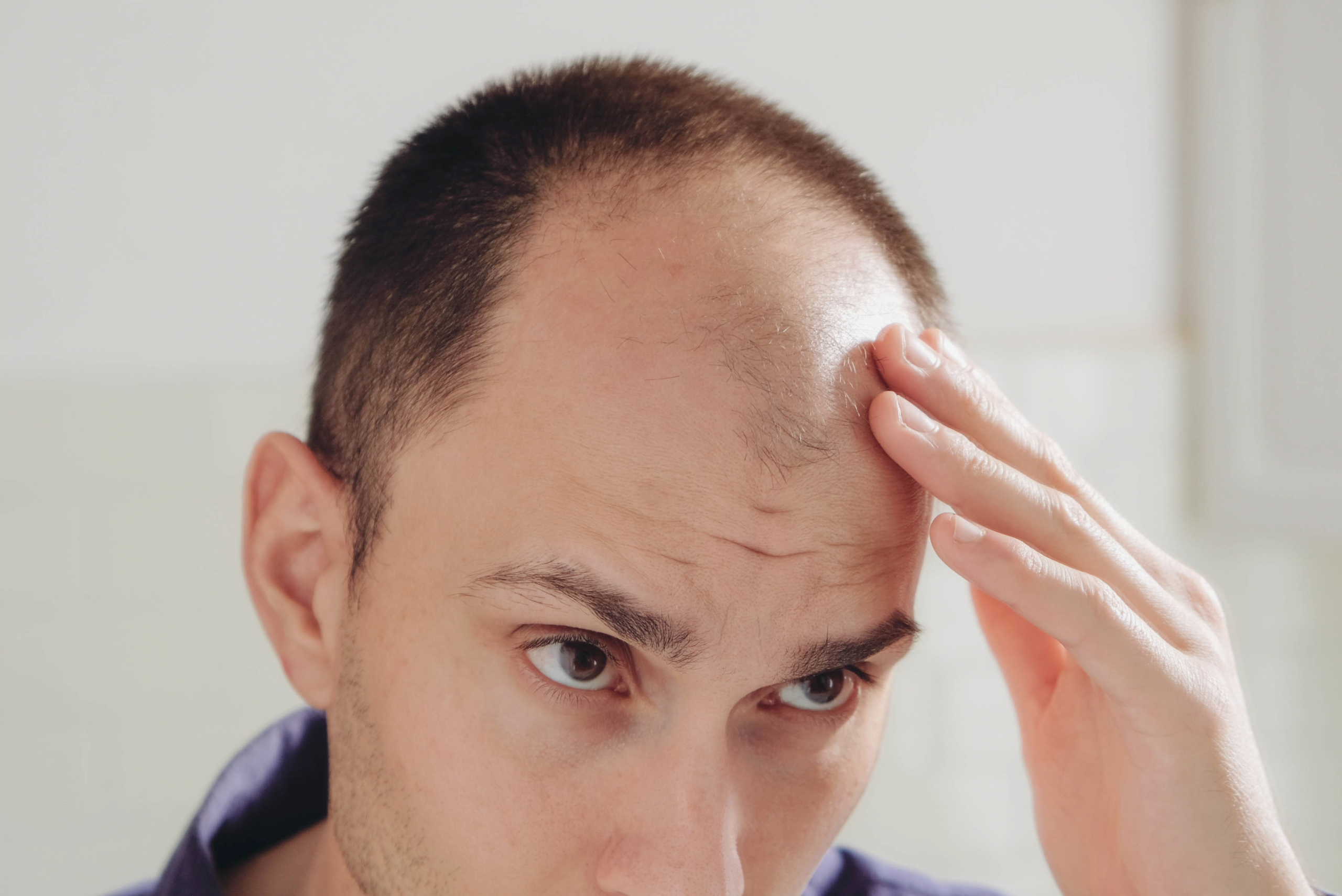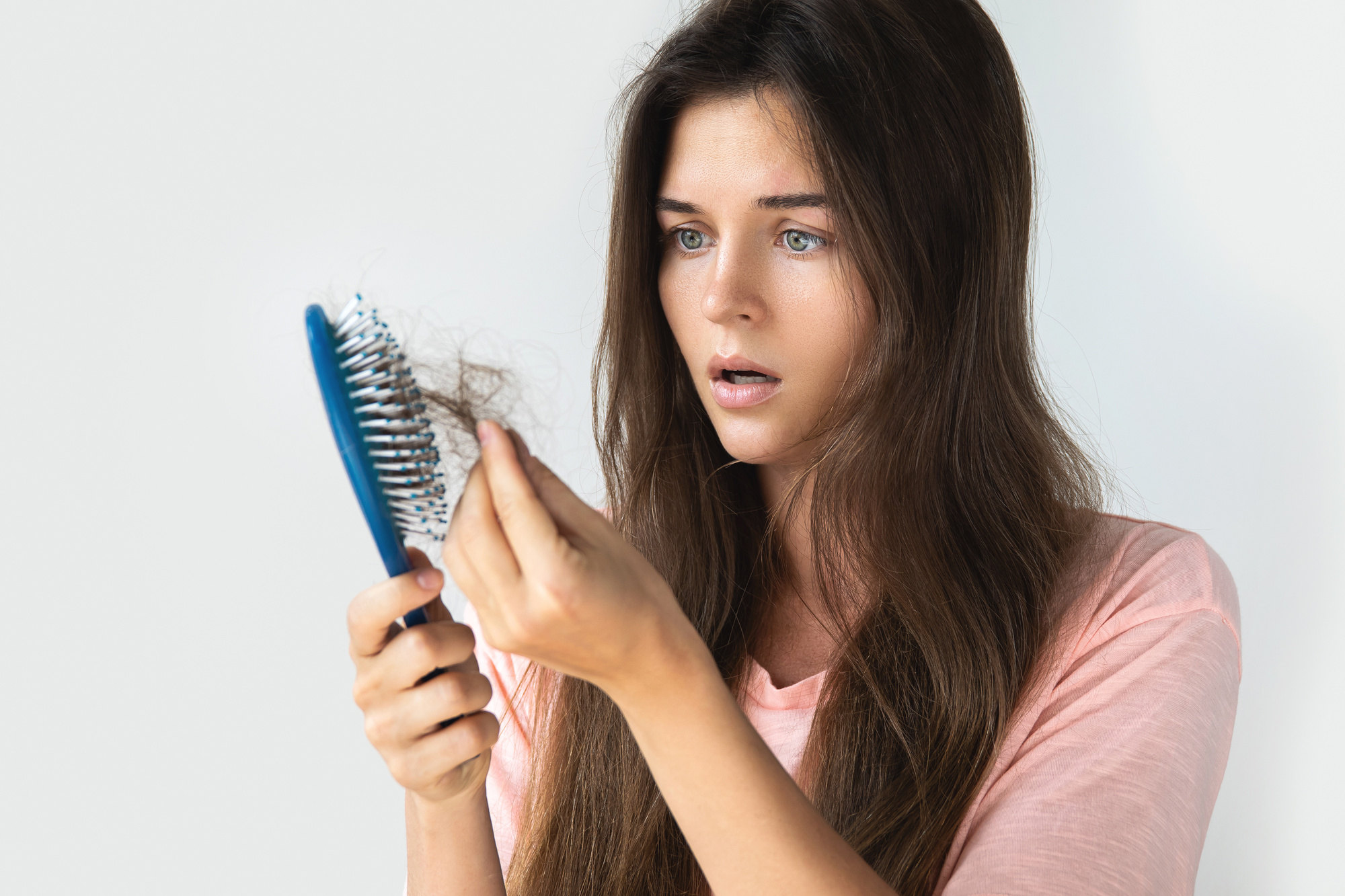Hair loss is a common concern that affects people of all ages and genders. As reported by The Washington Post, sufferers spend over USD$ 3.5 billion annually trying to treat hair loss. Unfortunately, a web of misconceptions surrounds this issue, making it challenging to distinguish fact from fiction. Additionally, these myths make it difficult for many people to seek appropriate treatments or deal with losing hair. (1)
Everyone seems to have ‘expert’ advice, but how do you know what to believe? Busting all those hair loss myths is the first step to feeling less confused and taking charge. Whether you’re looking for treatment or want to rock your hair loss with style, the truth sets you free! So, let’s get those facts straight.
-
Hair Loss Can’t Be Restored
One of the biggest myths of hair loss is that it’s permanent and leads to baldness. This myth can affect the confidence of anyone experiencing hair loss, suggesting that baldness is inevitable and irreversible. While some forms are indeed permanent, advances in medical treatment and hair restoration techniques offer hope for many people.
Conditions like scarring alopecia, where the hair follicles are permanently damaged, might result in irreversible hair loss. For many common causes of hair loss, such as androgenetic alopecia, telogen effluvium, and nutritional deficiencies, treatments are available to slow down its progression, stimulate regrowth, and even restore a fuller head of hair.
But to be able to restore your hair, you need to use tested and proven methods. Look for services within your region that specialize in different treatment options such as collagen induction therapy (CIT), facial hair transplant, and eyebrow, moustache, and beard hair transplants. For example, if you’re looking for hair restoration in Phoenix, ensure the services you use specialize in restoration, are science-based, and are board-certified.
-
Frequent Washing Leads to Hair Loss
You might worry that each shower washes away strands of healthy hair, leading to baldness. However, frequent shampooing is essential for scalp health and doesn’t cause hair loss. Naturally, some hairs will fall out during washing and are already in the shedding process.
Daily shampooing is perfectly fine for most people. However, using harsh shampoos or excessively scrubbing the scalp can irritate. Focus on gentle shampoos and massaging your scalp rather than aggressively rubbing; you won’t see any impact on hair retention from washing.
-
Wearing Hats Causes Hair Loss
The idea that wearing hats smothers your hair follicles, making your hair fall out, is a classic myth. In reality, hats that fit properly won’t damage your hair. The common causes of hair loss are underlying factors like genetics, hormonal imbalances, or medical conditions – not your favorite baseball cap.
While extremely tight hats might put some stress on hair strands over an extended period, this would more likely result in hair breakage rather than actual hair loss from the root. So, unless your hats cut off circulation, feel free to sport them without fear of causing baldness.
-
Hair Loss Only Affects Men
Hair loss is often portrayed as a male-exclusive problem. This misconception can leave many women feeling isolated and ashamed when they experience hair thinning or shedding.
The truth is that women are also susceptible to hair loss. In fact, statistics show that in 2021, about 12% of women in the USA had a hair loss condition, while in China, it was as high as 35% in the same year. (2)
Conditions like pattern hair loss, hormonal fluctuations (due to menopause, pregnancy, or thyroid disorders), autoimmune conditions, and even stress can lead to significant hair loss in women. It’s essential to acknowledge the prevalence of hair loss in women and to break the stigma surrounding it, empowering them to seek help and treatment when necessary.
-
Blow Drying Causes Hair Loss
It’s understandable to be cautious about heat styling if you’re concerned about hair loss. Excessive and close heat from blow drying can dry out your hair strands and make them more susceptible to breakage. However, this breakage should not be mistaken for permanent hair loss.
Blow drying can be a safe tool for hair styling when used with heat-protectant products and in a moderate heat setting. The key is to minimize direct heat exposure and avoid extreme temperatures.
If you notice excessive breakage or worsening hair condition, it’s wise to reduce blow-drying frequency and explore alternative styling methods.
-
Hair Loss is Always Inherited from Your Mother’s Side
The misconception that hair loss is exclusively inherited from the mother’s side is surprisingly persistent. While genetics undoubtedly play a significant role in hair loss, particularly in conditions like androgenetic alopecia, the reality is more complex. Hair loss genes can be passed down from either your mother’s or your father’s side.
When genes cause hair loss, it leads to male pattern baldness (MPB) or female pattern baldness (FPB) and can account for up to 80% of male baldness, according to a study on twins. However, it’s important to understand that hair loss isn’t caused by a single gene but rather by a combination of genetic factors. Another study showed that there are over 63 genes that can cause male baldness, with only six of them found in the X chromosome. This means that baldness can come from any side of your family. (3)
-
Shaving Your Head Makes Hair Grow Back Thicker
The desire for thicker and fuller hair fuels the myth that shaving makes it grow back stronger.
When you shave your head, the new hair growth might initially feel coarser as the blunt ends of the hair emerge. This temporary change in texture can give the illusion of thicker hair, but it’s just that—an illusion.
Shaving your head does not impact the number of hair follicles or the properties of the hair itself. As your hair grows, the tapered ends reappear, and the hair will return to its normal thickness.
Conclusion
Dealing with hair loss can be challenging, especially with confusing information out there. Don’t let myths or unreliable sources steer you wrong about the causes. Look for information from trustworthy sources like doctors, medical websites, and respected hair loss organizations. This will help you understand what’s really going on and find treatments that make a difference.
References
-
“Hair Loss Treatment”, Source: https://www.americanhairloss.org/hair_loss_treatment/default.html#:~:text=According%20to%20The,who%20use%20them
-
“Share of women with hair loss as a condition in selected countries in 2017 and 2021”, Source: https://www.statista.com/statistics/1378731/hair-loss-among-women-in-selected-countries/
-
“How to Fight the Baldness Gene (and Other Factors)”, Source: https://www.healthline.com/health/baldness-gene#genetics-of-balding:~:text=The%20%E2%80%98balding%20gene%E2%80%99%20explained,them%20found%20on%20the%20%E2%80%9CX%E2%80%9D%20chromosome

































